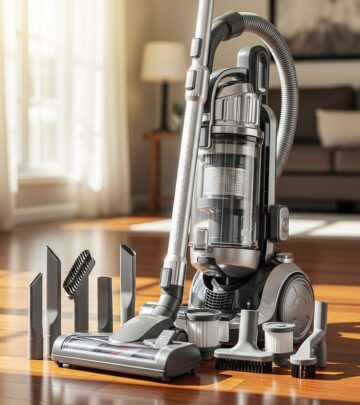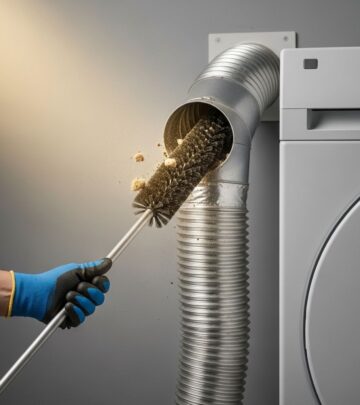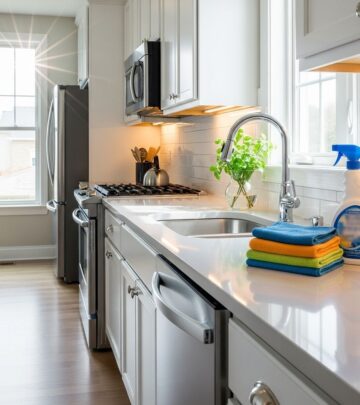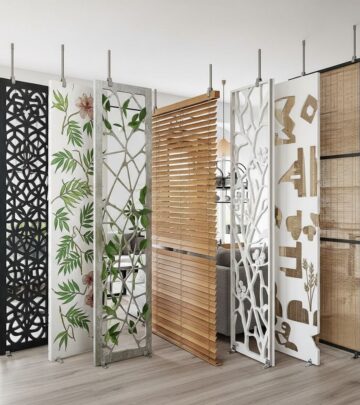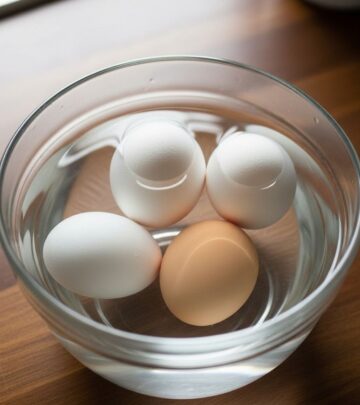Moisture Barrier Installation: Complete Guide For Your Home
Protect your home from water damage and mold with proper moisture barrier installation

Image: HearthJunction Design Team
Understanding Moisture Barriers: Your Home’s Defense Against Water Damage
A moisture barrier, also known as a vapor barrier or vapor retarder, is a crucial component of modern home construction and renovation. These specialized materials are designed to prevent water vapor from passing through walls, floors, ceilings, and other structural elements of your home. By controlling moisture migration, these barriers play a vital role in protecting your property from water damage, mold growth, and structural deterioration.
Whether you’re building a new home, renovating an existing structure, or addressing moisture issues in your current residence, understanding how moisture barriers work and where they should be installed is essential for maintaining a healthy, durable home. This comprehensive guide will walk you through everything you need to know about moisture barriers—from the different types available to proper installation techniques.
What Is a Moisture Barrier?
A moisture barrier is a material specifically designed to prevent the passage of water and water vapor through building elements such as walls, floors, and ceilings. These barriers come in various forms, including sheets, membranes, coatings, and specialized building materials, all serving the same fundamental purpose: controlling moisture movement within your home’s structure.
While often used interchangeably, the terms ‘moisture barrier,’ ‘vapor barrier,’ and ‘vapor retarder’ have slight technical differences. Vapor barriers are specifically designed to block water vapor transmission, while moisture barriers may address both liquid water and water vapor. Vapor retarders allow a small, controlled amount of moisture to pass through, which can be beneficial in certain climate zones and building designs.
Why Moisture Barriers Matter
Moisture control is one of the most critical aspects of building science and home maintenance. Uncontrolled moisture can lead to numerous problems that affect both your home’s structure and your family’s health:
- Mold and mildew growth: Excess moisture creates ideal conditions for mold and mildew, which can trigger allergies, respiratory issues, and other health problems.
- Structural damage: Prolonged moisture exposure can rot wood framing, corrode metal fasteners, and deteriorate other building materials.
- Reduced insulation effectiveness: Wet insulation loses much of its thermal resistance (R-value), leading to higher energy bills.
- Paint and finish failure: Moisture moving through walls can cause paint to blister, peel, and crack.
- Pest infestations: Damp conditions often attract wood-destroying insects and other pests.
How Moisture Moves Through Buildings
To understand why moisture barriers are necessary, it’s important to know how moisture travels through building materials. Water vapor moves in three primary ways:
- Diffusion: The direct movement of water molecules through porous materials, moving from areas of higher vapor pressure to lower vapor pressure.
- Air leakage: Water vapor carried by air currents through gaps, cracks, and openings in the building envelope.
- Capillary action: The movement of liquid water through small pores in materials, often against gravity (like water wicking up a paper towel).
Moisture barriers address different aspects of these movement mechanisms. While vapor barriers primarily control diffusion, proper moisture management requires a comprehensive approach that includes air sealing and capillary breaks.
Types of Moisture Barriers
Moisture barriers are classified based on their permeability—the rate at which they allow water vapor to pass through. This property is measured in “perms,” with lower perm ratings indicating greater resistance to moisture transmission.
Class I Vapor Barriers (0.1 perm or less)
These are considered true vapor barriers, allowing virtually no moisture transmission:
- Polyethylene sheets (6-mil or thicker)
- Aluminum foil
- Glass
- Sheet metal
- Oil-based paints and coatings
Class II Vapor Retarders (0.1 to 1.0 perms)
These materials significantly slow moisture movement but allow minimal transmission:
- Kraft paper-faced fiberglass insulation
- Vapor-retarding paint
- Plywood
- 30-pound asphalt-coated paper
Class III Vapor Retarders (1.0 to 10 perms)
These are considered semi-permeable and allow restricted moisture movement:
- Latex or enamel paint
- Most types of house wrap
- Fiberglass insulation (unfaced)
- Gypsum board (drywall)
Smart Vapor Retarders
A newer innovation in moisture control, smart vapor retarders change their permeability based on ambient humidity conditions. During winter months when indoor humidity is typically low, they act as vapor barriers. During summer when humidity rises, they become more permeable, allowing walls to dry in both directions. These adaptable materials are particularly useful in mixed climates.
Where to Install Moisture Barriers
The correct placement of moisture barriers depends on your climate zone, building design, and specific application. Installing barriers in the wrong location can actually trap moisture and create more problems than they solve.
Climate Considerations
The fundamental principle for vapor barrier placement is that it should be installed on the warm side of the insulation. This prevents warm, moist air from reaching cold surfaces where condensation can occur. However, this principle creates different requirements depending on your climate:
- Cold climates (northern regions): Install vapor barriers on the interior side of walls, as moisture primarily moves from the heated interior to the cold exterior during winter months.
- Hot, humid climates (southern regions): Install vapor barriers on the exterior side of walls, as moisture primarily moves from the humid outside air to the air-conditioned interior during summer months.
- Mixed climates: These regions present challenges since moisture can move in either direction depending on the season. Smart vapor retarders or careful design with appropriate ventilation is often recommended.
Common Applications
Crawl Spaces
In crawl spaces, moisture barriers (typically 6-mil or thicker polyethylene sheeting) should cover the entire ground surface and extend several inches up the foundation walls. Seams should overlap by 12 inches or more and be sealed with appropriate tape. This prevents ground moisture from rising into the crawl space and affecting the home above.
Exterior Walls
For exterior walls, the vapor barrier placement depends on your climate zone as described above. In addition to climate considerations, the wall assembly design—including siding type, sheathing materials, and insulation choice—will influence the appropriate vapor barrier solution.
Floors
For floors over unconditioned spaces (like crawl spaces or unheated basements), moisture barriers are typically installed beneath the subfloor or between the subfloor and finish flooring material, depending on the specific construction details and flooring type.
Ceilings and Attics
In cold climates, ceiling vapor barriers help prevent warm, moist interior air from reaching the cold attic space. However, proper attic ventilation is equally important to remove any moisture that does reach this area.
Installation Best Practices
Proper installation is critical for moisture barriers to function effectively. Here are key guidelines to follow:
- Create a continuous barrier: Gaps or tears will compromise the entire system. Overlap seams generously and seal them with appropriate tape or mastic.
- Seal penetrations: Carefully seal around pipes, wires, outlets, and other penetrations through the barrier.
- Coordinate with other systems: Ensure that moisture barriers work in conjunction with air barriers, insulation, and ventilation systems.
- Follow manufacturer instructions: Different products have specific installation requirements that must be followed for warranty coverage and optimal performance.
- Consider professional installation: For whole-house applications or complex situations, professional installation ensures proper protection.
Common Moisture Barrier Mistakes to Avoid
Even well-intentioned moisture barrier installations can create problems if certain principles aren’t understood:
- Installing barriers on both sides of walls: This can trap moisture between barriers, creating a “moisture sandwich” that promotes mold growth and decay.
- Ignoring climate-specific requirements: Using cold climate strategies in hot, humid regions (or vice versa) can exacerbate moisture problems.
- Relying solely on vapor barriers: Effective moisture management requires a comprehensive approach that includes air sealing, proper insulation, and adequate ventilation.
- Improper sealing: Failing to properly seal seams and penetrations can render moisture barriers ineffective.
- Using damaged materials: Tears, punctures, or deteriorated barriers won’t provide adequate protection.
Frequently Asked Questions (FAQs)
Q: Do I need a moisture barrier in my existing walls?
A: It depends on several factors including your climate zone, current wall assembly, and whether you’re experiencing moisture problems. Adding a vapor barrier to existing walls can be challenging without opening wall cavities. Consult with a building science professional before attempting to retrofit moisture barriers in existing construction.
Q: Can I use plastic sheeting as a moisture barrier under hardwood flooring?
A: While polyethylene sheeting is an effective moisture barrier, using it directly under hardwood flooring can trap moisture between the barrier and wood, potentially causing cupping or warping. For hardwood installations, follow manufacturer recommendations, which typically include specialized underlayments that provide appropriate moisture protection while allowing some breathability.
Q: How do I know if my home has moisture barrier problems?
A: Signs of moisture barrier issues include: persistent condensation on windows; mold or mildew growth, especially in corners or behind furniture; musty odors; peeling paint or wallpaper; warped or stained flooring; and water stains on ceilings or walls. If you notice these symptoms, consider consulting with a moisture management professional.
Q: Are moisture barriers the same as waterproofing?
A: No. While moisture barriers control water vapor transmission, waterproofing systems are designed to prevent liquid water penetration. Both may be necessary in certain applications, such as basement walls, where both vapor control and liquid water protection are required.
Conclusion
Moisture barriers represent a critical component of your home’s defense against water damage, mold growth, and structural deterioration. When properly selected and installed according to climate-specific requirements, these materials help maintain a healthy, durable living environment while improving energy efficiency.
Understanding the science behind moisture movement and the appropriate applications for various barrier types allows homeowners to make informed decisions about moisture management strategies. Whether you’re building new, renovating, or addressing existing moisture issues, proper moisture barrier implementation will protect your investment and provide peace of mind for years to come.
References
- https://www.thisoldhouse.com/walls/87464/vapor-moisture-barriers
- https://www.youtube.com/watch?v=_D5_ESYvydk
- https://www.thisoldhouse.com/insulation/21015381/types-of-insulation
- https://www.thisoldhouse.com/insulation/21018293/insulation-education
- https://www.doityourself.com/forum/insulation-radiant-vapor-barriers/423881-insulation-vapor-air-barrier-retrofit-old-house.html
Read full bio of Srija Burman




